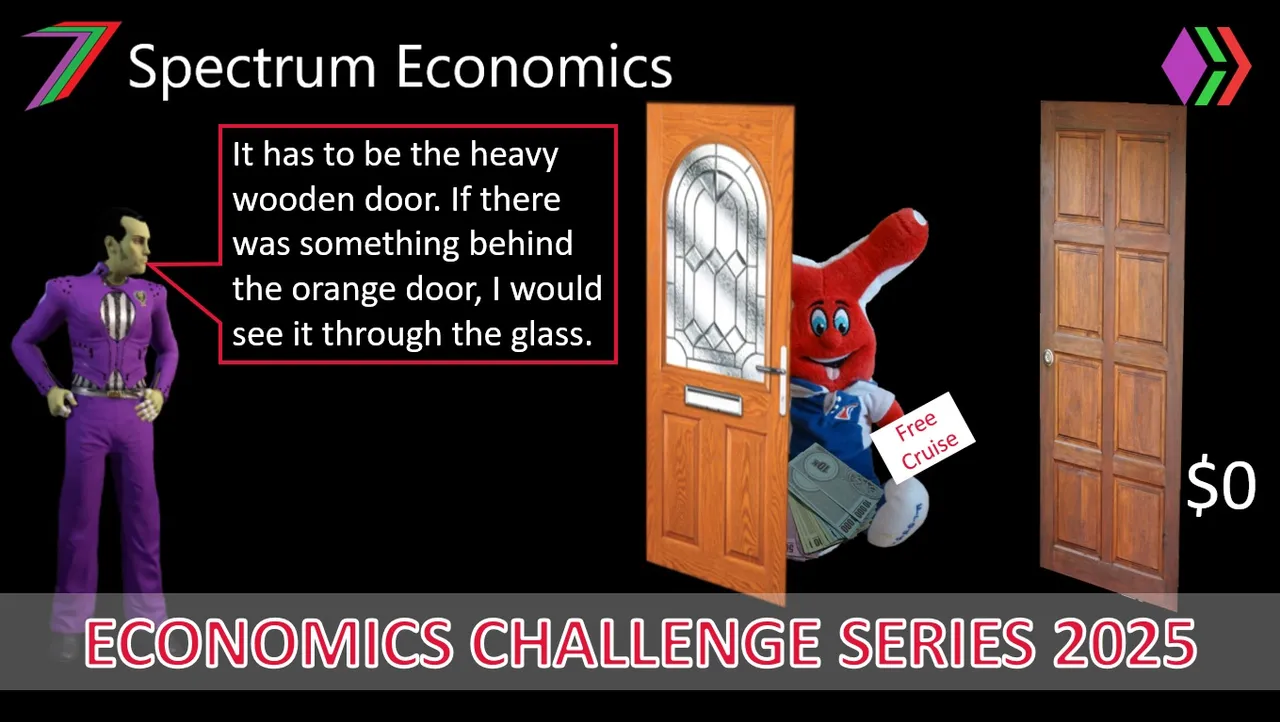Hi Everyone,
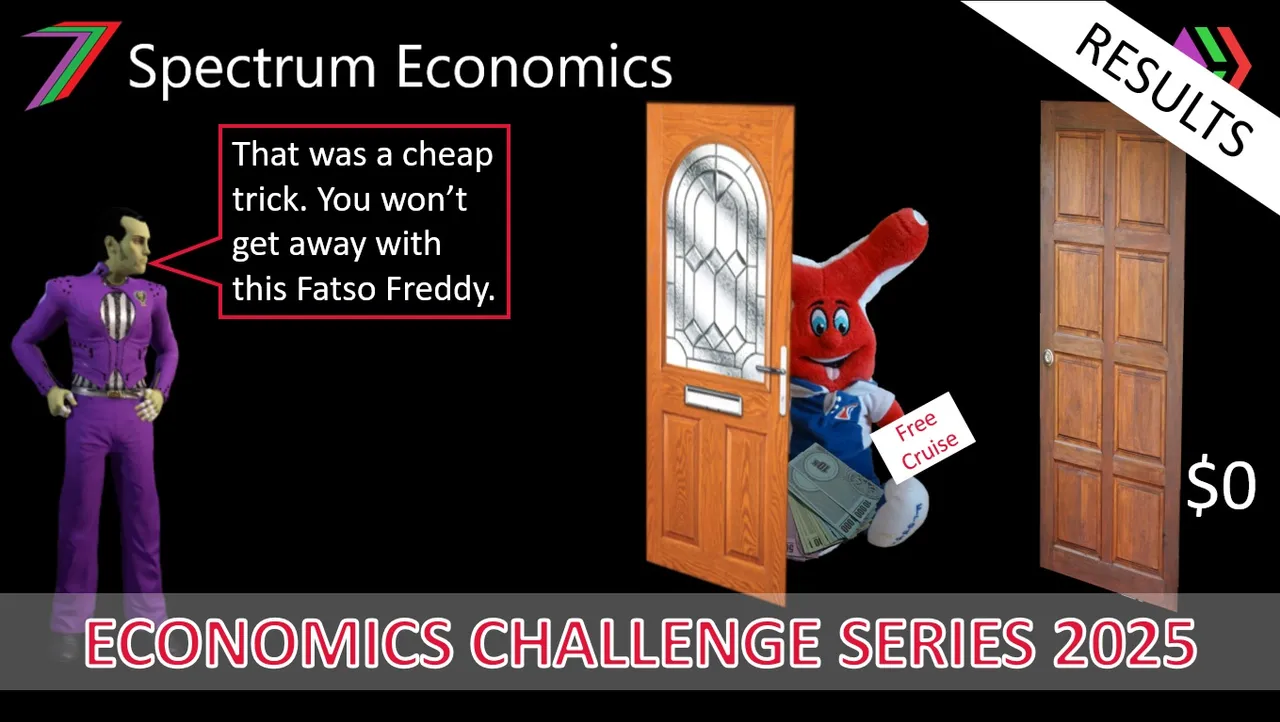
It is time to reveal the results for the 2025 Economics Challenge Series. All six challenges have been posted. Below are the links to these challenges.
- Challenge 1: Game Theory Game
- Challenge 2: The Buying and Selling Game
- Challenge 3: Pick-a-Door
- Challenge 4: Ice Cream Game
- Challenge 5: Auction
- Challenge 6: Even-to-Win
The challenge series has become an annual event held in July and August. The challenge series normally consists of seven challenges. This year because of some time constraints, it has been reduced to just 6.
The purpose of the challenge series is to enable participants to use their knowledge of basic economic concepts to help them to win. Concepts include demand and supply, game theory, expected value, and location theory.
The challenge series is set up to reward participation. The first 15 participants are upvoted, and the prize increases by 4 Hive Power with each participant until a maximum of 60 Hive Power is reached. There is also a prize for the overall winner. This prize increases by 1 Hive Power and can reach a maximum of 80 Hive Power. Potentially, a lot of Hive Power could be given away.

You can read about the challenge series in any of the challenge posts.
Results
Welcome to the results post for the Pick-a-Door Challenge. This post contains the results as well as how they were generated using a Microsoft Excel model.
Winner Determined in this Video?
What is the Pick-a-Door Challenge?
For the benefit of those who did not enter this challenge, here is a brief explanation of how the game works.
In this challenge, participants were required to make decisions based on expected payoff and risk. Participants were presented with 12 doors. Behind each door there could be a prize (expressed in dollars). Each door had a possible prize worth a different amount. As the value increased, the probability of the prize being behind the door decreased. For example, Door 3 had an 85% chance of a prize worth $28, and Door 7 had a 50% chance of a prize worth $78. If the prize is not there, the participant will receive a value of zero.
Opening a door cost $15; each participant was given a budget of $60. Therefore, each participant could open as many as 4 of the 12 doors. Participants were not compelled to use all of the budget. If a participant opens 2 or more doors that have zero value behind them, they are eliminated from the challenge. If not eliminated, the winner is the participant with the highest total value expressed in dollars (i.e., the combined value of prizes minus the cost of opening doors).
Responses to the challenge were made in the comments section of the challenge post. If several participants make the same profit, the person who entered (i.e., commented) first wins. The total prize for this challenge is equivalent to 4 times the number of participants (e.g., if the challenge has 9 participants, the prize will be 36 Hive Power (4 × 9)). The maximum prize for this challenge is 60 Hive Power. The winner receives 2/3 of the prize, and second place receives 1/3 of the prize. In addition to the winning prize, the first 12 entries are given upvotes.
The format of the required entry is explained in detail in the challenge itself.
For a more detailed explanation, you can access the challenge post using the following link.
Results of the Pick-a-Door Challenge
Table 1 contains the participants and the doors they selected.
Table 1: Doors Selected by Participants
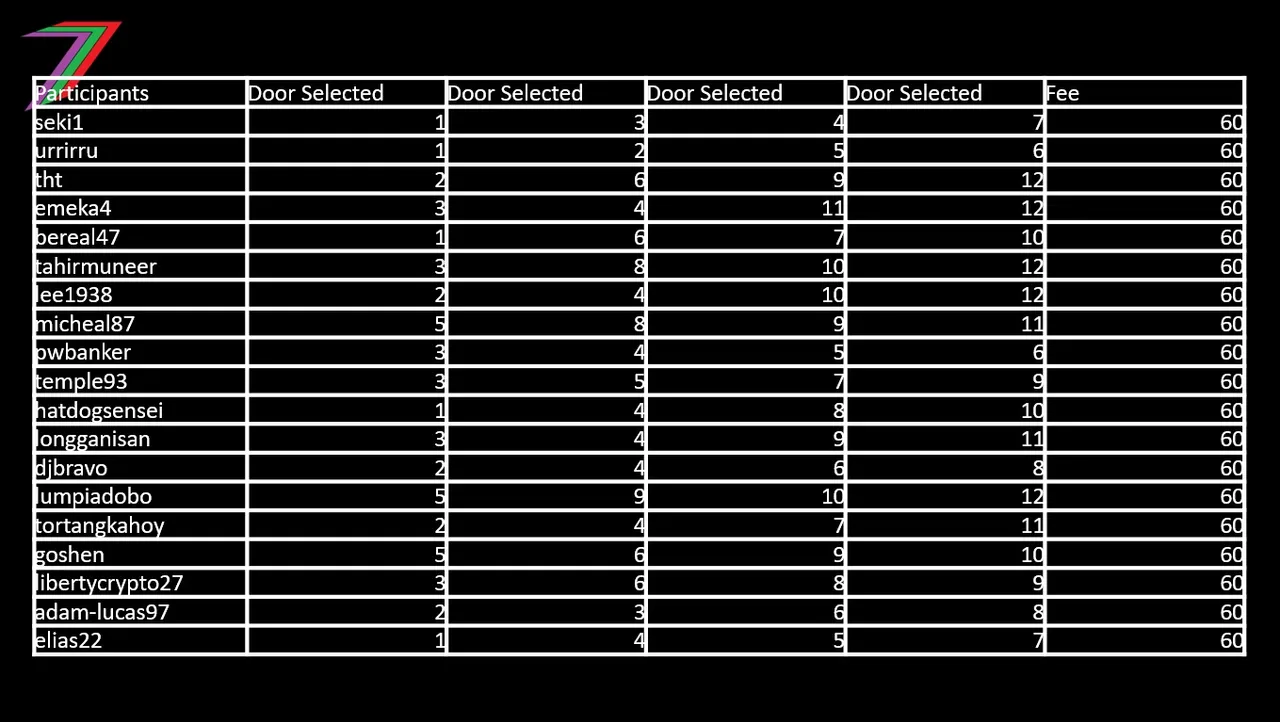
Table 2 contains the potential prizes behind each door, the probability that the prize will be there, and the actual prize based on the Excel Model.
Table 2: Prizes Behind Each Door
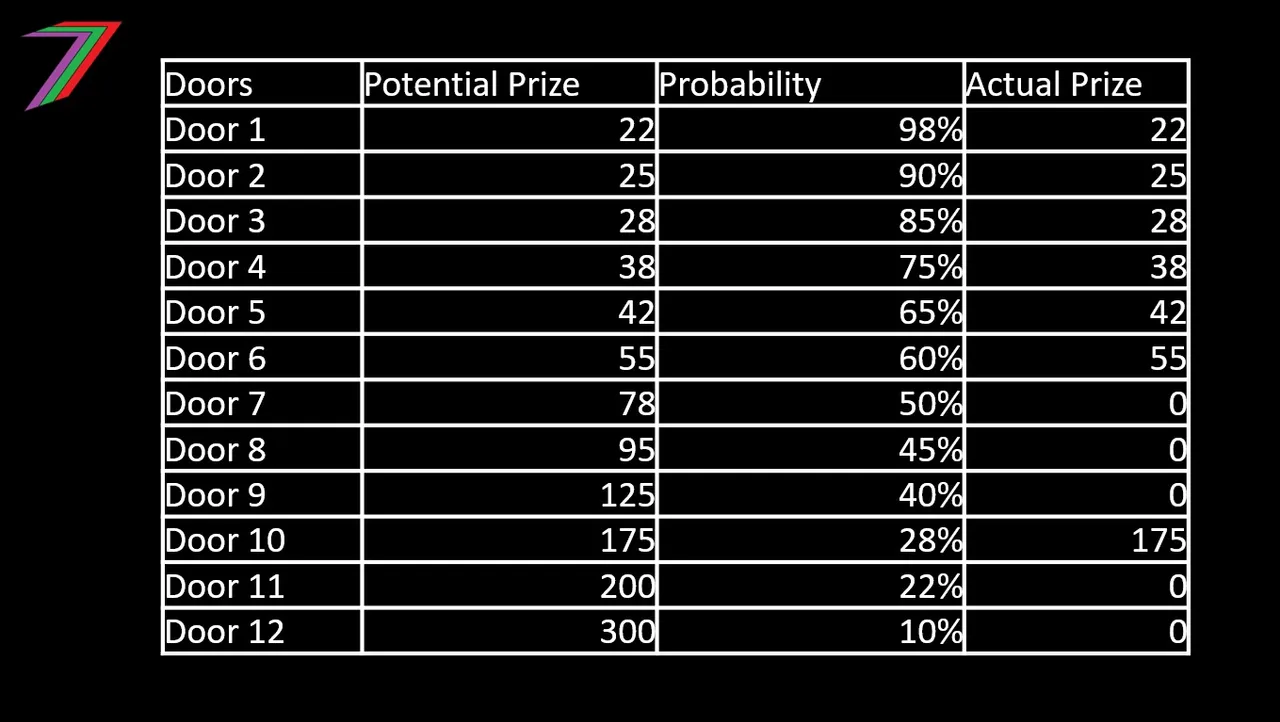
Table 3 contains the prizes each participant won, the total value of prizes, the criterion of no more than one door with a value of zero (eliminated participant’s totals are in red font), and the Challenge winner (highlighted in red).
Table 3: Challenge Winner
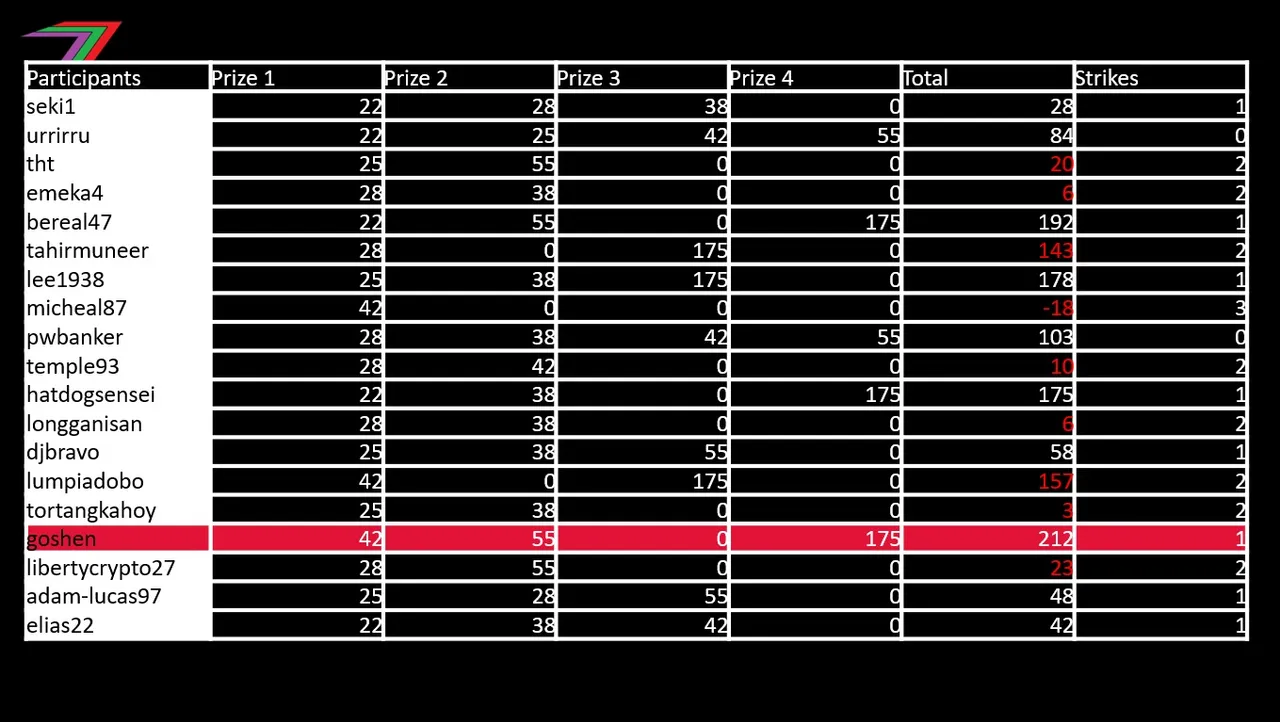
Out of the 19 participants who entered, 9 were eliminated for opening more than one door with a zero value. Of the remaining 10 participants, @goshen obtained the highest total value. This amounted to $212. Three of the four doors opened had a positive value. This included Door 10, which had the highest value. @goshen wins 40 Hive and 40 points. In second place is @bereal47, who also selected three doors with positive values and managed to accumulate a total value of $192. @bereal47 wins 20 Hive and 15 points. In third place is @lee1938 with an accumulated value of $178 and is awarded 5 points.
None of the participants managed to open the combination of doors that would have achieved the highest possible total. This combination would have been Doors 4, 5, 6, and 10. This would have accumulated a total prize worth $310. @goshen was just one box away from obtaining this combination. The winning participants did very well. Selecting the optimal combination would have involved considerable luck.
Overall Series Score
After three challenges, the overall scores for the Challenge Series are as follows:
| Position | Participants | Points |
|---|---|---|
| 1 | Micheal87 | 40 |
| 2 | Goshen | 40 |
| 3 | Tortangkahoy | 30 |
| 4 | Emeka4 | 15 |
| 5 | Bereal47 | 15 |
| 6 | Hatdogsensei | 5 |
| 7 | Lee1938 | 5 |
This table will be updated in every results post.
Challenge Tips and Analysis
This challenge relies very heavily on luck. Any of the doors could have prizes behind them. As more participants enter, the results depend even more greatly on luck. Even so, a good strategy could increase your chances of winning. It helps if participants have a good idea of the number of participants entering and the choices they have made. Therefore, entering late offers an advantage in that aspect. For example, if only two participants have entered. Participant 1 has decided to open only Door 1, and Participant 2 to only open Door 12. At this point, Participant 1 has an 88.2% chance of winning, Participant 2 only has a 10% chance of winning, and there is a 1.8% chance they will tie.
Participant 3 could choose to open just Door 2, 3, 4, 5, 6 or 7 to have a better chance of winning than either Participant 1 or 2. If Participant 3 knows no other participant will enter, opening Door 2 is the best option. Participant 3 would have over an 81% chance of winning, Participant 1 would only have around a 9% chance of winning (a very big drop), and Participant 2 would still have a 10% chance of winning. There would be less than a 1% chance of a tie. As more participants enter, the chances of winning from selecting high-percentage, low-payout options decrease significantly. Low-percentage, high-payout options may fall, but by a lower percentage.
For this challenge, there were a reasonably high number of participants (15). Selecting high payout options with maybe one low payout option would have been a good strategy. However, the rule of not opening more than one door without a prize increases the risk of selecting high payout options. This risk can be mitigated by selecting to open only three doors instead of four. For example, just opening Doors 3, 10, and 11. This would have obtained a score of 158. In this challenge, that participant would have been fifth.
The Sapien Loop Series

I am writing a trilogy of books titled Sapien Loop. The first in the series is Sapien Loop: End of an Era and the second is Sapien Loop: Frozen in Time. I published both of these books as ebooks on Amazon, and I have posted completed chapters to my @captainhive account. I anticipate publishing the third book in early 2027. I expect to title this book Sapien Loop: Worlds Collide. In 2025, I plan to write short stories about some of the characters and their adventures. I will post these to my @captainhive over the course of the year.
Brief Summary of Sapien Loop: End of an Era
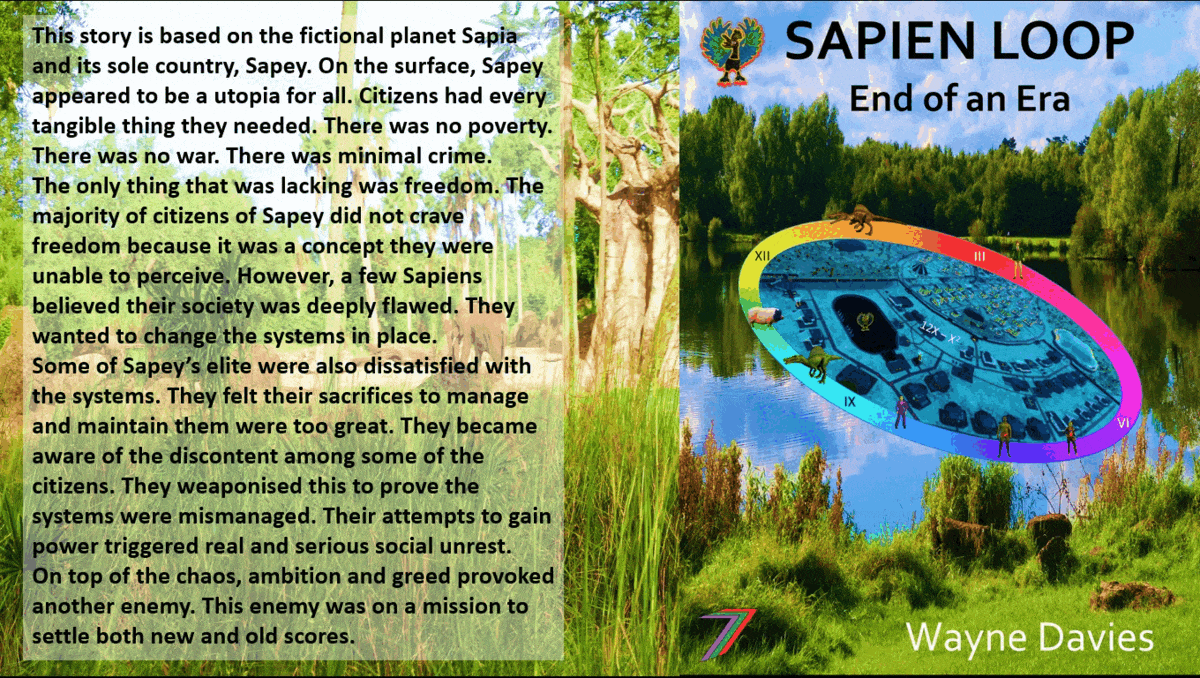
This story is based on the fictional planet Sapia and its sole country, Sapey. Sapey is portrayed as a form of utopia for all its citizens. No poverty. No war. Almost no crime. Opportunities for all.
This was enough for most citizens, but not all. In one of the small regions, some of the citizens had become discontent. They felt something important was missing in their lives. Their discontent did not go unnoticed. Some of the Sapey elite wanted to weaponise this discontent to gain more power. This created more chaos than they anticipated. This led to further widespread social unrest.
On top of the chaos, ambition and greed provoked another enemy. This enemy was on a mission to settle both new and old scores.
Brief Summary of Sapien Loop: Frozen in Time
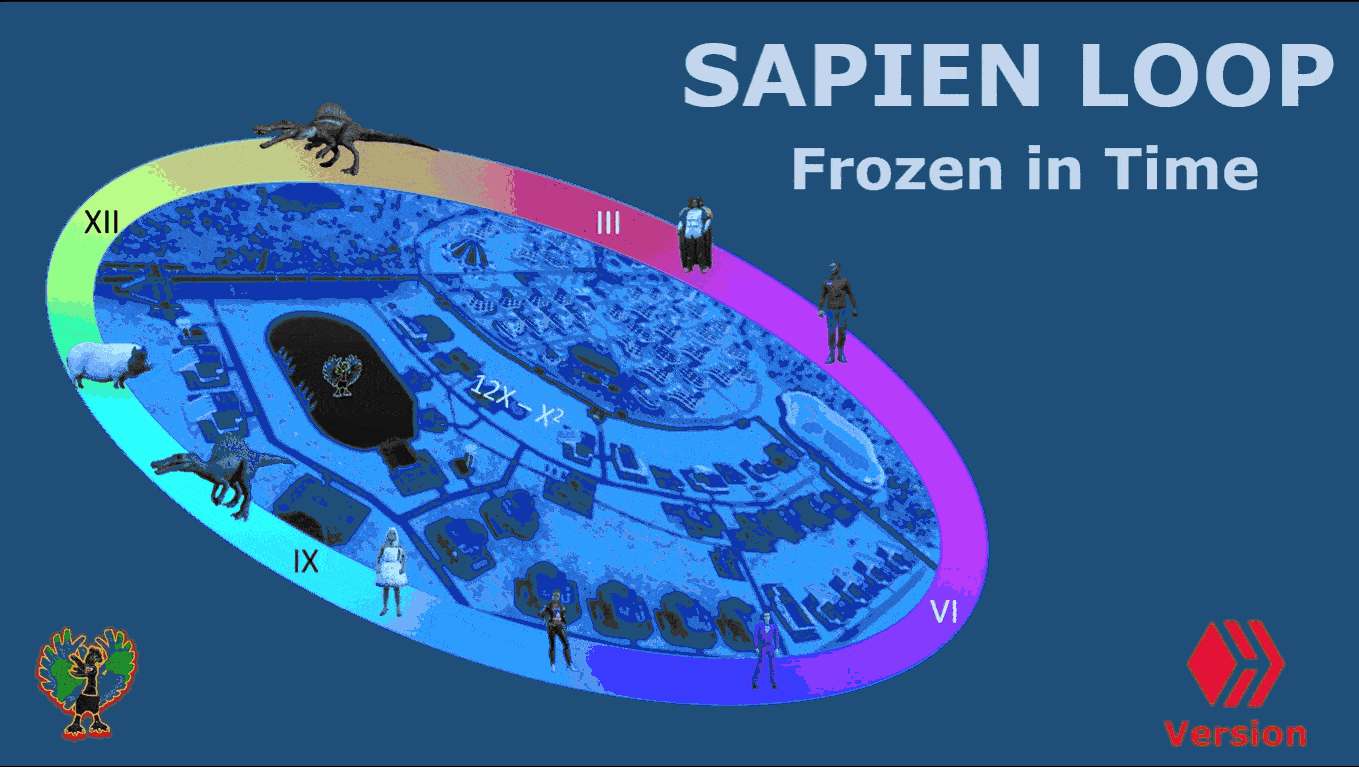
This story is based six years after the original story. The Downs Region is still suffering from a serious health crisis caused by the contaminated water. The main characters are desperately trying to find a cure for the illness that has been caused by the water.
One of the main characters has discovered frozen humanoids in hidden chambers. It appears they have been frozen for a long time. These chambers connect to a vast network of tunnels. While exploring the tunnels, one of the frozen humanoids disappears. It appears he has been stolen.
The story takes a step back in time to tell the story of the frozen humanoids. How and why were they frozen? This part of the story also explains the fall of ancient Sapey and the birth of the Sapiens. Can those from the past be able to coexist with those from the present?
Hive: Future of Social Media

Spectrumecons on the Hive Blockchain

▶️ 3Speak

